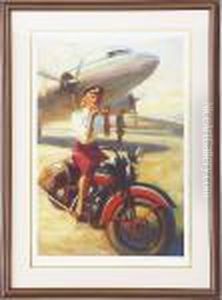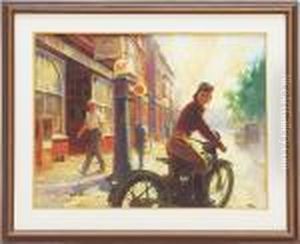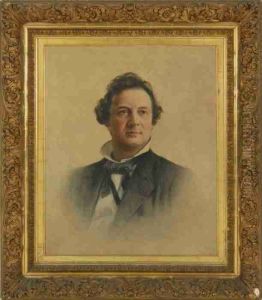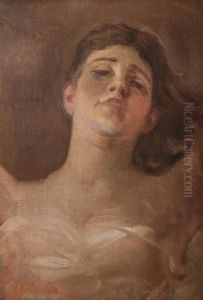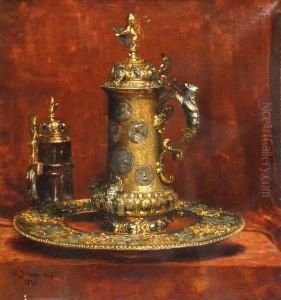S. Jerome Uhl Paintings
S. Jerome Uhl was an American painter, born in Louisville, Kentucky, in 1842. His full name, Samuel Jerome Uhl, may not be widely recognized today, but in the late 19th and early 20th centuries, he was a respected artist known for his portraits, genre scenes, and historical paintings. Uhl's journey into the art world began at a young age, and his talents were nurtured through his studies in the United States and Europe, a common practice for aspiring American artists of his time.
After his initial education in Louisville, Uhl moved to New York, where he studied at the prestigious National Academy of Design. His quest for artistic mastery led him across the Atlantic to Paris, a global art capital, where he honed his skills under the tutelage of renowned French painters. Among his teachers were the academic painter Jean-Léon Gérôme and possibly Léon Bonnat, both influential figures in the Parisian art scene. These experiences in Europe played a crucial role in shaping Uhl's artistic style, which combined American sensibilities with European techniques and themes.
Upon returning to the United States, Uhl established himself as a portrait artist, capturing the likenesses of notable figures of his time. His works were recognized for their realism and depth, qualities that endeared him to a clientele of wealthy patrons. Beyond portraiture, Uhl engaged with genre painting, depicting scenes of everyday life with a keen eye for detail and emotion. His historical paintings also garnered attention, offering viewers a glimpse into America's past with a romanticized yet thoughtful perspective.
Uhl's contributions to the art world were acknowledged through exhibitions and awards. His works were showcased in prominent venues such as the Paris Salon and the National Academy of Design, reflecting his status as an artist of considerable talent and recognition. Despite the acclaim, Uhl remained committed to his artistic vision, exploring themes of beauty, human experience, and history throughout his career.
S. Jerome Uhl passed away in 1916, leaving behind a legacy that, while perhaps not as celebrated as some of his contemporaries, offers a rich and nuanced exploration of American and European artistic intersections. Today, Uhl's paintings can be found in collections and museums, serving as a testament to his skill and dedication to his craft.
